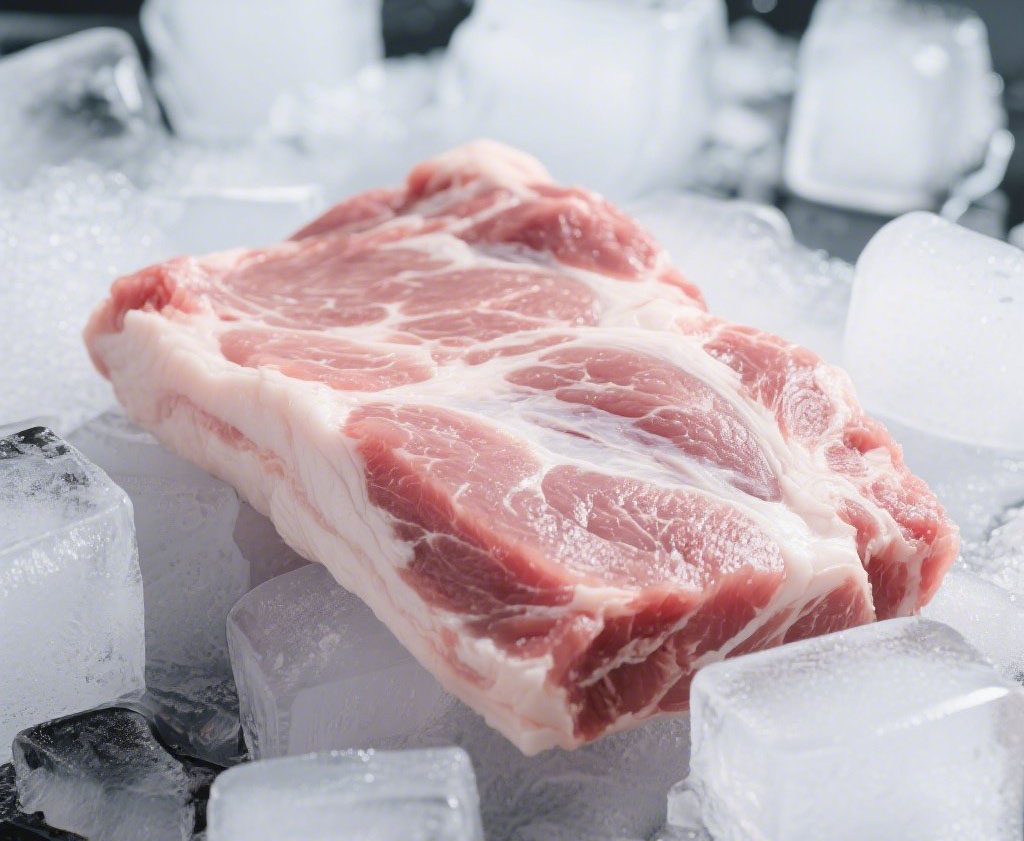1. Pork’s Unique Physiology and Storage Objectives
1.1 High Fat Content and Oxidation Risk
Pork’s abundant subcutaneous and intermuscular fats are prone to lipid oxidation when exposed to dry air, producing “rancid” or “harvey” off-flavors. Unlike beef’s focus on myoglobin protection, pork storage must prioritize fat preservation through humidity control and antioxidant or low-oxygen packaging to inhibit oxidative pathways Transport Informations ServiceIntersam.
1.2 Loose Muscle Structure and Moisture Loss
With lower myoglobin content and a looser fiber matrix than beef, pork dehydrates more readily under low RH, leading to surface shrinkage, color fading (“white death”), and up to 2 %–4 % weight loss, diminishing both visual appeal and cooking yield Transport Informations ServiceFAOHome.
2. Temperature and Humidity Requirements
2.1 Optimal Short-Term Chilling Range
Temperature: 0 °C–4 °C, which slows enzymatic and microbial activity without inducing chill injury Transport Informations Service.
Relative Humidity: 85 %–90 % RH to lock in moisture and protect fat layers while avoiding condensation risks Conex Containers Depot艾迪泰克无线技术.
2.2 Humidity Extremes and Risks
Too Low (< 85 % RH): Accelerated dehydration, “cold-wind burn,” toughening of outer layers, and weight loss FAOHome.
Too High (> 95 % RH): Surface condensation fosters microbial growth and drip loss, compromising safety and texture 港口经济与管理.
3. Packaging and Atmosphere Control
3.1 Antioxidant and Low-Oxygen Packaging
Vacuum‐seal or modified‐atmosphere packaging with reduced O₂ levels (< 2 %) and antioxidant sachets mitigates lipid oxidation, crucial for pork’s high‐fat profile Intersam.
3.2 Pre-Cooling and Buffer Zones
Rapid pre-cooling tunnels drop core temperatures into the target range before cold-room entry, minimizing moisture introduction. Buffer cold rooms equipped with programmable humidity control smooth out fluctuations caused by frequent loading/unloading FAOHome.

4. Airflow and Defrost Strategies
4.1 Controlled Air Velocity and Direction
Avoid direct high‐velocity air on meat surfaces; instead, use multi-point, gentle airflow (≤ 0.2 m/s) to maintain uniform conditions without creating “wind spots” or “wind cracks” on pig skin Conex Containers Depot.
4.2 Frost Management
Intermittent hot‐gas bypass or electric defrost cycles, combined with dry-air recirculation, prevent evaporator coil icing without large RH swings. This ensures stable humidity and temperature, reducing energy use by up to 20 % annually 港口经济与管理.
5. Operational Practices for Rapid Turnover
5.1 Door Management and Alarm Systems
Fast‐rolling doors and air curtains limit exposure; door‐open durations should not exceed 3 minutes, with FIFO/FEFO enforced to minimize RH/temperature shocks. Smart sensors with ± 2 % RH accuracy and 1–5 min sampling trigger alarms on deviations CalAmp艾迪泰克无线技术.
5.2 Integrated Dehumidification/Humidification
PLC‐linked condensing dehumidifiers and steam or ultrasonic humidifiers automatically adjust RH, maintaining 85 %–90 % RH without manual intervention Conex Containers Depot美国农业部.


 Return to List
Return to List
 Phone
Phone